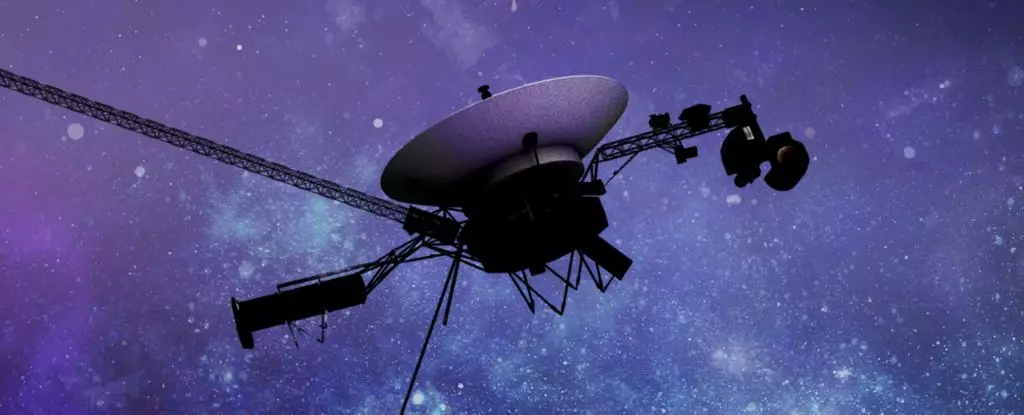After a period of silence, the distant but beloved Voyager 1 spacecraft has finally reestablished contact with Earth, transmitting valuable science data back to its creators at NASA. This reconnection comes after months of confusion and frustration, during which the probe was unable to communicate effectively due to technical issues. Now, with all four of its instruments back in operation, Voyager 1 is once again fulfilling its mission to explore the unknown regions of interstellar space.
The troubles faced by Voyager 1, a 46-year-old spacecraft currently located 24 billion kilometers away from Earth, serve as a reminder of the challenges inherent in deep space exploration. Technical malfunctions, such as a corrupted chip in the probe’s memory system, have required ingenuity and dedication from the team at NASA to overcome. Despite operating with outdated technology, the Voyager probes continue to push the boundaries of human knowledge and understanding of the cosmos.
The Voyager spacecraft, including its sibling Voyager 2, are on a groundbreaking mission to study the interstellar medium, an area of space never before directly observed by man-made objects. These probes provide crucial insights into the nature of our Solar System and the extent of the Sun’s influence. While often described as having left the Solar System, they have only crossed the heliopause and are yet to reach the theorized Oort cloud. The data they collect is invaluable for advancing our understanding of the universe.
Despite their remarkable resilience, the Voyager probes face ongoing challenges due to dwindling power supplies. As these spacecraft continue their journey into the unknown, engineers at NASA are working tirelessly to ensure that the probes can transmit data back to Earth for as long as possible. With predictions that Voyager 1 will have at least one functioning instrument by 2025 and potential communication capabilities until 2036, there is hope that these intrepid explorers will continue to unravel the mysteries of deep space.
As we celebrate the return of Voyager 1 to full operation, it is essential to acknowledge the enduring legacy of this iconic spacecraft. From its groundbreaking discoveries about the structure of our Solar System to its ongoing mission at the edge of interstellar space, Voyager 1 has captured the imagination of people around the world. As we look to the future of space exploration, we can draw inspiration from the resilience and determination of Voyager 1 and its creators at NASA.


Leave a Reply